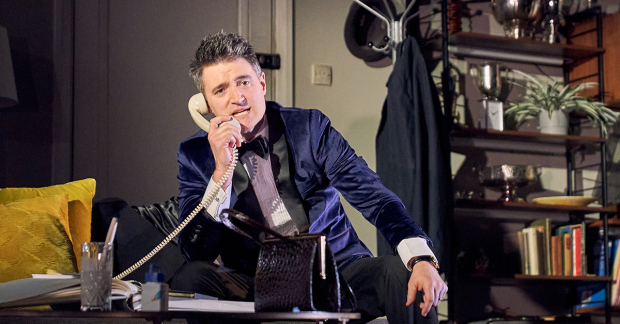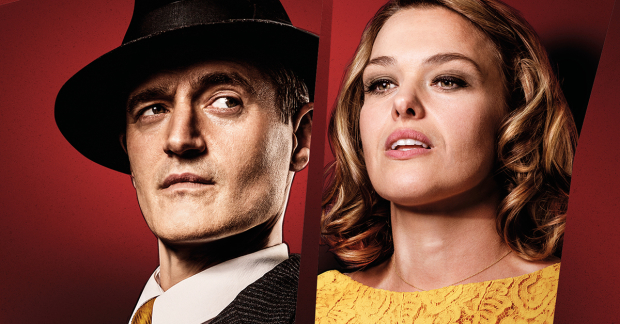Review: Dial M for Murder (Richmond Theatre and tour)

© Manuel Harlan
It's no surprise that Frederick Knott's suspense thriller was an irresistible choice for Alfred Hitchcock, who adapted it into a beloved cult classic way back in 1954 (two years after its stage premiere). With moral ambiguity, sudden twists and many suavely-dressed central characters that spend the whole night with their eyebrows perpetually cocked, it's the sort of crowd-pleasing experience that can shock through the ages.
And a lot of what made Knott's play so great back in the '50s is very much on show over 60 years later, as the one-room, two-act experience embarks on a new tour with a cast led by Tom Chambers. Following a former champion tennis player, Tony, who has a fractious, destructive relationship with his wife, it's a close-knit piece where every strand is easily followable and the drama can be easily scooped up by the bucket-load.
It's helped by some sturdy performances from the cast of four. Chambers takes the right cues from the likes of James Stewart, Carey Grant and, of course, Ray Milland as Tony – an amiable yet inscrutable figure at the heart of a tightly twisted knot of plotlines. Special mention must also go to Christopher Harper, multi-roling, who brings the second act to life as the riddle-unravelling Inspector Hubbard.
But director Anthony Banks, who has a raft of thrillers to his name (Gaslight, Girl on the Train and Strangers on a Train among them) is too laborious with his opening few scenes – rather than breezing through the lengthy expositional moments, he plods nobly on, statically placing characters on sofas in the centre of the hyper-realised set for lengthy passages of time. It all kicks up a gear by the second act, but it's a slight mission to get there.
A small bugbear comes in the form of a couple of blocking moments – meaning faces are left unlit early on, and there was also a jarringly unnecessary psychedelic musical interlude: using every gel that the lighting designer clearly had access to, it hampers the production rather than augmenting it.
But even with these slight speedbumps, it's hard to stop the freewheeling tension of Knott's excellent script, which plots its course with surety and taught precision. Lovers of a BBC boxed set would have a whale of a time basking in the crime classic.











